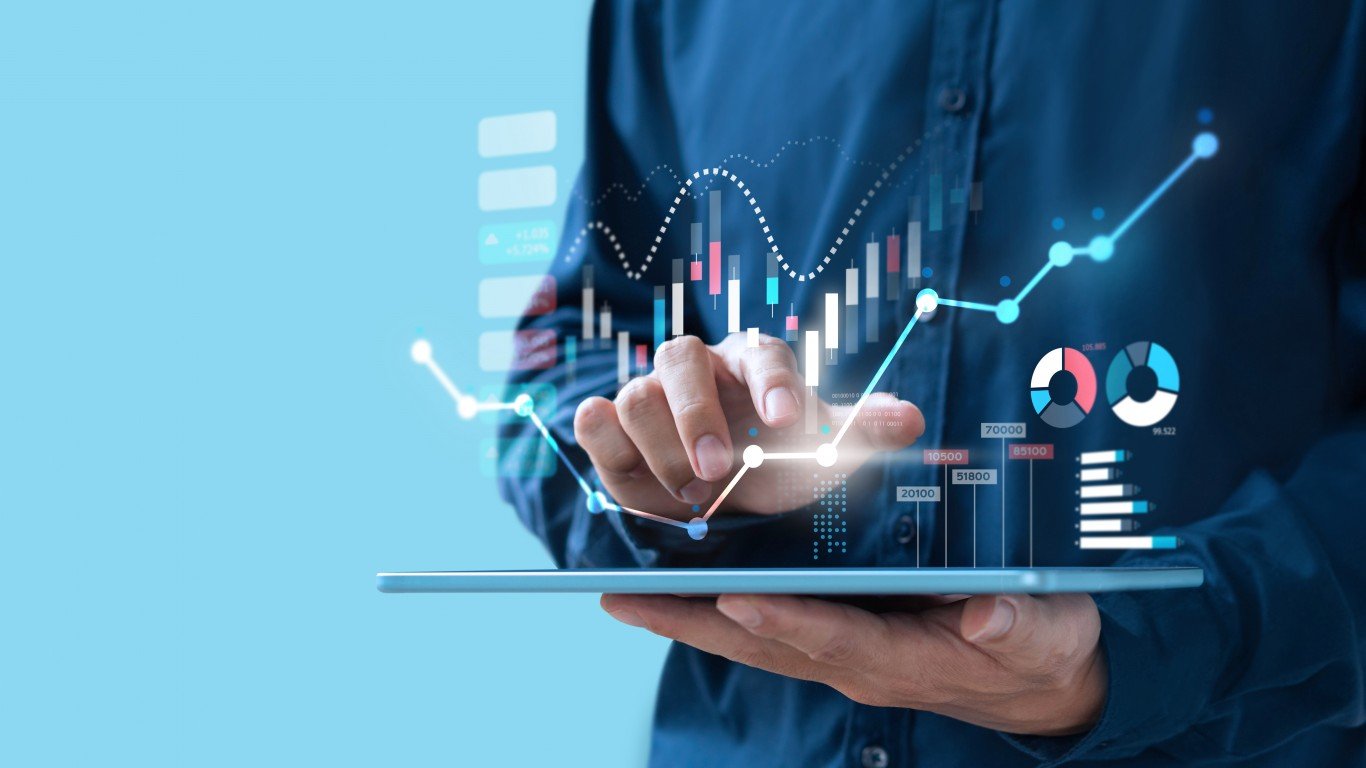

The S&P 500 index is widely regarded as the gauge of the U.S. stock market, representing the performance of some of the largest publicly traded companies. While predicting the future direction of such an influential index is no easy task, analyzing historical trends and economic indicators makes it doable. Below, we outline what a bull, base, and bear scenario might look like for the S&P 500 over the coming decade.
Inflation

Inflation rates, as reflected in the Consumer Price Index (CPI) and Core CPI, can determine the path of the S&P 500. January saw a rise in CPI, which included a 0.39% contribution to Core CPI in excess of consensus expectations. As a result, market participants grew acutely sensitive to inflationary pressures. The scale with which the Federal Reserve historically implements policy to change the federal funds rate triggers a corresponding shift in stock valuations. The Federal Reserve’s policy decisions are based on a range of economic indicators, including unemployment rates, GDP growth, consumer sentiment, and many more.
The monthly percentage change in Core CPI was higher than what economists forecasted prior to the release of the CPI report. This means that inflation is not as low as wanted. This forces the Fed to consider tightening monetary policy to neutralize inflation’s effects on the economy, thereby potentially lessening a stock market’s bullish sentiment. Alternatively, uninspired inflation or stabilization of Core CPI might cause the Federal Reserve to maintain an accommodative policy for longer, giving rise to a stronger bullish narrative. Let’s remember that the Core CPI is a measure of inflation that excludes volatile components such as food and energy prices. Therefore, it may not fully capture the overall inflationary pressures in the economy.
Core CPI advanced by 0.39% month-over-month in January, above 0.30% forecasts. If a decline in the equity markets was caused by investors having stronger fears about rising inflation, then the downward move in prices would be larger. It interprets an ongoing increase in stock prices as a positive indication of the overall health of the market. However, since the Core CPI would have increased by just 0.08% month-over-month after omitting shelter (+0.26%) and auto insurance (+0.05%), investors might suppose that this month’s increase in CPI and the accompanying Core CPI appreciation are exaggerating how much inflation is affecting the value of their investments. It is important to notice and understand this distinction in the next few months because it has a large impact on how well the economy is doing and how the Federal Reserve plans to handle interest rates in the future.
As 2024 unfolds, it will be crucial to monitor shifts in inflation to anticipate the strategic paths chosen by the Federal Reserve and the prospective impact on the S&P 500.
Bull Case

A bullish prognosis for the S&P 500 is based on several factors:
Continued economic growth: The U.S. economy is expected to continue to grow in the next 6 years, and this growth ought to translate to higher corporate profits and thus higher stock prices.
Technological advancements: Breakthroughs like artificial intelligence and automated processes are expected to increase productivity and economic output; in turn, these developments will support equity valuations.
Low-interest rates: If the Federal Reserve keeps interest rates at the lower bound in the short term, the S&P 500 companies might see upward pressure on their stock prices.
S&P 500 Price Projection for 2030: $9,000
Base Case

A base case scenario sees a slower pace of growth for the S&P 500, backed by the following evidence:
Modest inflation: Since the Federal Reserve has been raising the federal funds rate over the last year, inflation has decreased. One of the duties the Federal Reserve has is to keep inflation near 2% every year. Based on their goals, it is believed that inflation will be in the neighborhood of 2% by 2030. This is more in line with historical standards than the 10% inflation we saw in the last few years after all the money printing post-Covid, which would be a marked contrast from the Fed’s target of 2%.
Measured interest rate hikes: The Federal Reserve is expected to usher in periods of higher interest rates in the decade ahead but at a pace determined to avoid a violent swing in the quotations of stock prices.
S&P 500 Price Projection for 2030: 7,500
Bear Case

A bearish view of the S&P 500 would be predicated on the following risks:
Elevated inflation: If inflation sticks around, or worse, accelerates, it is feasible that higher interest rates take a chunk out of economic expansion. This in turn would normalize corporate profits and stock prices. There are strategies for profiting in a rising price environment.
Geo-political risks: An intensification of geo-political threats – think a continued Ukraine situation – will increase the potential for a war in general, as well as an increased possibility of volatility for world stock markets.
S&P 500 Price Projection for 2030: 6,000
Final Whisper

Forecasts see the S&P 500 marked for a substantial amount of growth in the lead-up to 2030. Expansion in business, technological improvement, and monetary easing will push the index higher. Nonetheless, potential risks are numerous in the shorter term; taking caution, as usual, is prudent.
The assumptions in this article are subject to change, and the actual performance of the index may deviate from this projection. It is crucial to acknowledge that the pace and extent of interest rate hikes, as well as the level of inflation, are difficult to predict with certainty. The information contained in this article should not be taken as financial advice. Before making investment decisions, conduct your research and consult a registered financial advisor.
About the author: Amit Nar is not a registered financial advisor. He can be followed on X @alphaintelligence and on discord.
Smart Investors Are Quietly Loading Up on These “Dividend Legends” (Sponsored)
If you want your portfolio to pay you cash like clockwork, it’s time to stop blindly following conventional wisdom like relying on Dividend Aristocrats. There’s a better option, and we want to show you. We’re offering a brand-new report on 2 stocks we believe offer the rare combination of a high dividend yield and significant stock appreciation upside. If you’re tired of feeling one step behind in this market, this free report is a must-read for you.
Click here to download your FREE copy of “2 Dividend Legends to Hold Forever” and start improving your portfolio today.
Thank you for reading! Have some feedback for us?
Contact the 24/7 Wall St. editorial team.



